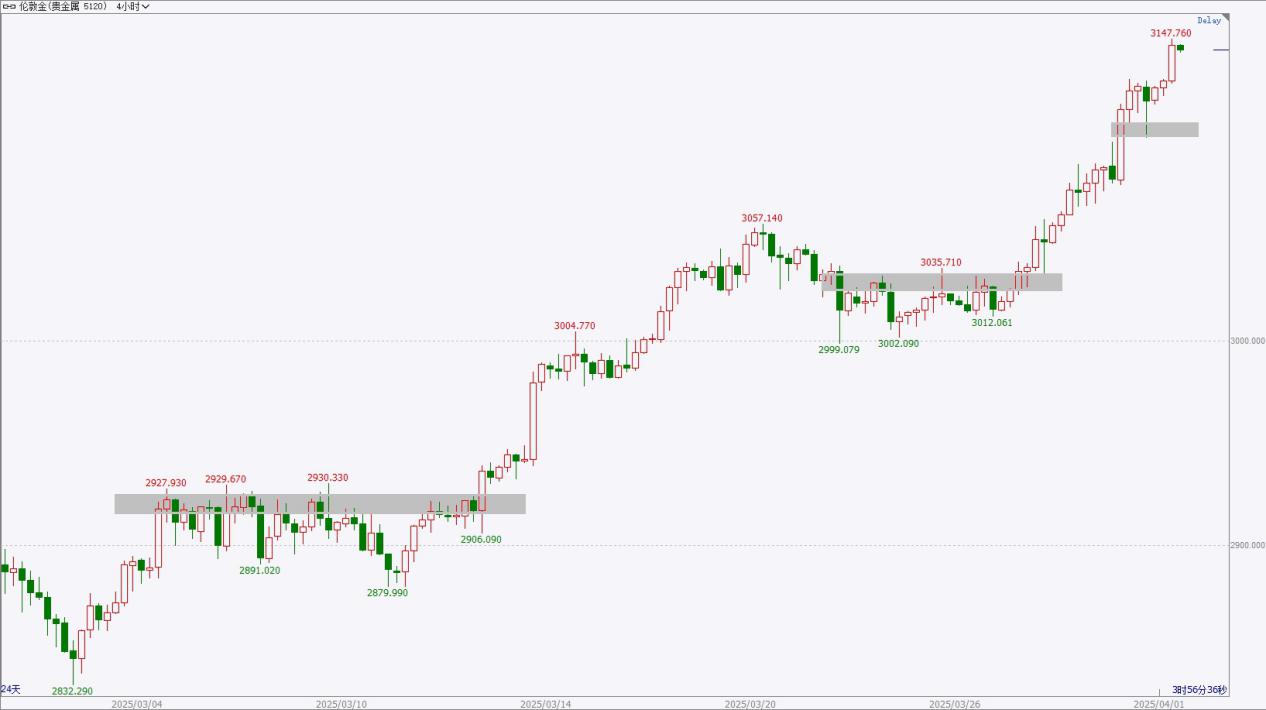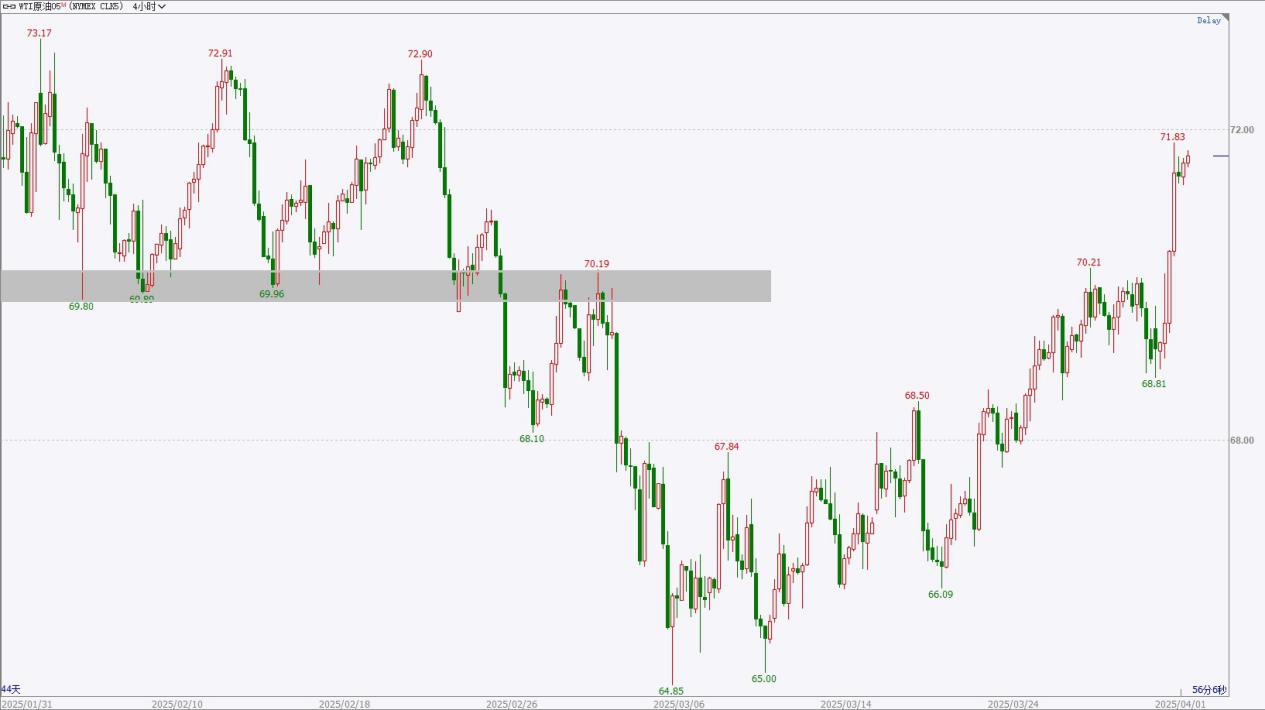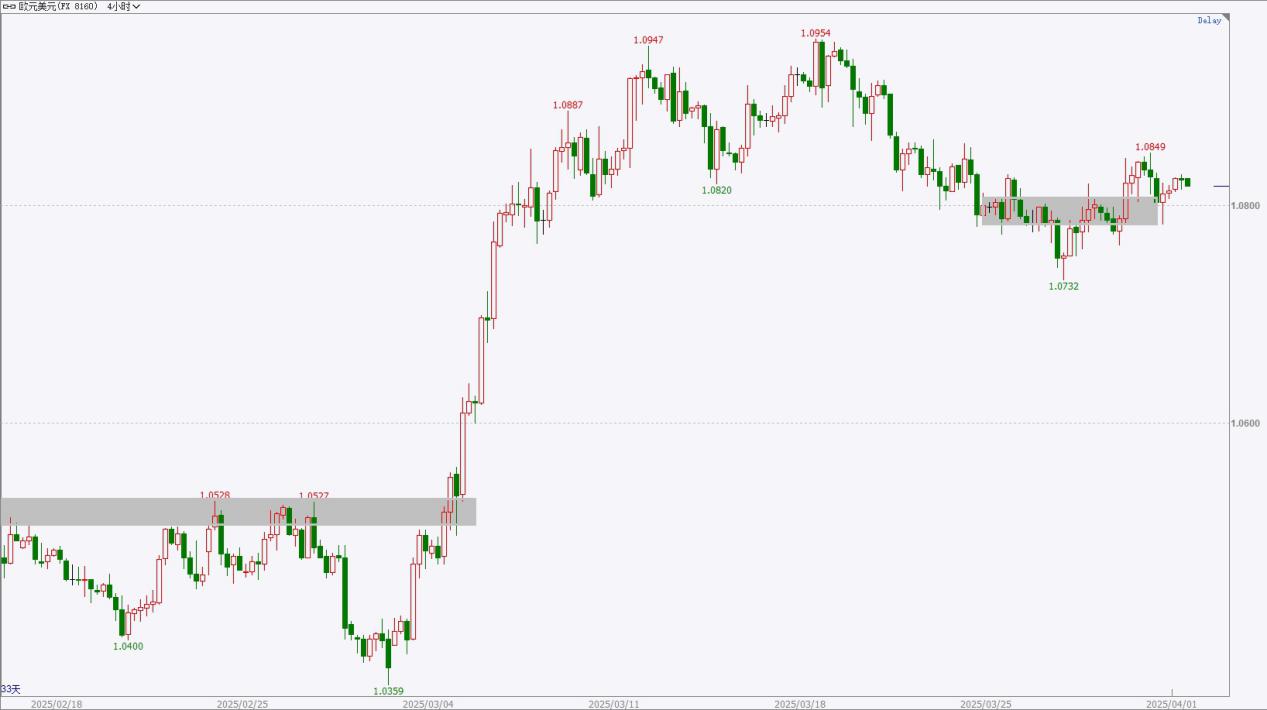|
Time
|
Data and Events
|
Importance
|
|
07:30
|
Japan’s unemployment rate for February
|
★★★
|
|
11:30
|
Australia’s Reserve Bank interest rate decision as of April 1
|
★★★
|
|
12:30
|
Reserve Bank Governor Philip Lowe holds a monetary policy press conference
|
★★★
|
|
14:30
|
Switzerland’s actual retail sales year-on-year for February
|
★★★
|
|
15:50
|
France’s manufacturing PMI final value for March
|
★★★
|
|
15:55
|
Germany’s manufacturing PMI preliminary value for March
|
★★★
|
|
16:00
|
Eurozone’s manufacturing PMI final value for March
|
★★★
|
|
16:30
|
UK’s manufacturing PMI final value for March
|
★★★
|
|
17:00
|
Eurozone’s CPI year-on-year preliminary value for March
|
★★★
|
|
Eurozone’s CPI month-on-month preliminary value for March
|
★★★
|
|
Eurozone’s unemployment rate for February
|
★★★
|
|
20:30
|
European Central Bank President Christine Lagarde speaks at the AI conference
|
★★★
|
|
21:00
|
2027 FOMC voter Barkin discusses monetary policy and economic outlook
|
★★★
|
|
22:00
|
US manufacturing PMI for March
|
★★★★
|
|
US job openings (JOLTs) for February
|
★★★
|
|
US construction spending month-on-month for February
|
★★★
|
|
Variety
|
Viewpoint
|
Support Range
|
Resistance Range
|
|
US Dollar Index
|
Bearish with volatility
|
103-103.5
|
106-107
|
|
Gold
|
Bullish with volatility
|
3100-3110
|
3180-3200
|
|
Crude Oil
|
Bullish with volatility
|
68-69
|
73-74
|
|
Euro
|
Bullish with volatility
|
1.0730-1.0750
|
1.0950-1.1000
|
*Preliminary view, time-sensitive and limited, for reference and study only, does not constitute investment advice, and operational risks are borne by the individual. Investment involves risks; trading requires caution.
Fundamental analysis:
In March, the Federal Reserve meeting maintained interest rates, the labor market remained stable, inflation expectations for this and next year were raised, while GDP growth forecasts for the next three years were lowered, and the pace of balance sheet reduction will slow starting in April, with tariff policy uncertainties. February non-farm data showed an increase of 151,000 jobs, slightly below expectations, and a slight rise in the unemployment rate, indicating a slight cooling of the labor market. The year-on-year CPI for February was 2.8%, slightly lower than the previous value and expectations; the core PCE price index saw a slight rebound. Pay attention to Friday’s non-farm data.
Technical analysis:

The US dollar index saw a slight rebound yesterday, but the short cycle did not create obvious higher points, showing a weak volatility in the short term. Prices may retest the support area, at which point it is essential to observe whether a stabilizing signal emerges. If it breaks below the support, the market will turn weaker. Overall, prices are correcting from a high position, with no significant stabilization signs seen, and a short-term volatility is likely. The upper resistance area is around 106-107, while the lower support area is around 103-103.5.
Viewpoint: Bearish with volatility; another retest of the support area is possible, at which point attention should be paid to stabilizing signals.
*Preliminary view, time-sensitive and limited, for reference and study only, does not constitute investment advice, and operational risks are borne by the individual. Investment involves risks; trading requires caution.
Fundamental analysis:
Geopolitical conflicts in the Middle East continue to worsen, and there remains short-term uncertainty in Eastern Europe. The European Central Bank’s rate decision in early March recorded a fifth consecutive rate cut of 25 basis points, with inflation progressing smoothly and economic growth risks skewed to the downside. The U.S. Federal Reserve’s rate decision in March remained unchanged, with a stable labor market, a downward adjustment of GDP growth expectations, and plans to slow the pace of balance sheet contraction. The U.S. CPI year-on-year in February recorded 2.8%, slightly below expectations; the core PCE price index rebounded slightly; U.S. tariff policies may stimulate the safe-haven attributes of gold. Pay attention to the non-farm payroll data later this week.
Technical analysis:

Gold prices surged significantly during the day, with the short cycle continuing to set new highs, showing strong short-term performance, and long positions taking profits on highs without any signs of weakening yet, mainly focusing on low buy strategies on dips. From a larger cycle perspective, the upward structure remains intact, and the daily line shows a volatile upward trend with prices repeatedly hitting new highs. The upper pressure level may be around 3180-3200, while the lower support level may be around 3100-3110.
Perspective: Fluctuating with a strong bias, prices hit new highs again, focusing on low buy strategies on dips and taking profits on highs.
*Preliminary view, time-sensitive and limited, for reference and study only, does not constitute investment advice, and operational risks are borne by the individual. Investment involves risks; trading requires caution.
Fundamental analysis:
The March EIA report basically maintains its oil price forecast for 2025 and slightly raises the global oil demand growth forecast for 2026; the OPEC monthly report keeps the global oil demand growth outlook for this and next year unchanged; the IEA report slightly lowers its global oil demand growth forecast for 2025. In early February, the OPEC+ meeting agreed to adhere to the previous oil production agreements, and the committee consented to gradually increase oil production starting from April 1, in line with previous plans. EIA crude oil inventories decreased significantly, which may support oil prices in the short term. Attention should be paid to changes in the supply and demand structure.
Technical analysis:

U.S. crude oil surged significantly in night trading, with a strong performance in the short cycle, nearing the upper pressure area, which may lead to fluctuations and the need to be cautious of short-term pullbacks. Long positions should be taken profits on highs, while the short-term focus should be on low buy strategies on dips. Overall, oil prices are rebounding from low levels, and the daily line shows an upward trend. Watch for signs of stability on a larger scale. The upper pressure area is around 73-74, while the lower support area is around 68-69.
Perspective: Fluctuating with a strong bias, adopting a short-term buying strategy and taking profits on highs.
*Preliminary view, time-sensitive and limited, for reference and study only, does not constitute investment advice, and operational risks are borne by the individual. Investment involves risks; trading requires caution.
Fundamental analysis:
The European Central Bank’s rate decision in early March recorded a fifth consecutive rate cut of 25 basis points, with inflation dropping steadily and a slight downward adjustment in GDP growth forecasts for this year and next, with economic growth risks leaning toward the downside; tariffs may bring negative impacts. The U.S. Federal Reserve’s rate decision in March remained unchanged, raising inflation expectations while lowering GDP growth expectations, planning to slow down balance sheet reductions. U.S. non-farm payroll data for February showed that new employment numbers were slightly below expectations, and the unemployment rate rose slightly to 4.1%. In the Eurozone and economies like France and Germany, the manufacturing PMI values were slightly better than previous and expected values. Keep an eye on the non-farm payroll data this week.
Technical analysis:

The euro price fluctuated slightly during the day, showing no signs of weakening. The short-term bullish performance slightly prevails, and a test of the pressure level may be possible; one can try short-term buying opportunities while taking profits promptly and also monitoring whether the price can break through previous highs. Overall, after a significant rise in the previous trend, there are signs of stabilization after a short-term correction, which may lead to the resumption of an upward trend. The upper pressure region is around 1.0950-1.1000, while the lower small-level support region is around 1.0700-1.0750.
Perspective: Fluctuating with a strong bias, showing signs of stabilization in the short cycle, providing opportunities to attempt short-term buying.
*Preliminary view, time-sensitive and limited, for reference and study only, does not constitute investment advice, and operational risks are borne by the individual. Investment involves risks; trading requires caution.


Daily Reviews
Our award-winning team of analysts provides keen and insightful technical and fundamental analysis to understand daily market news and investment trading opportunities
HTFX Daily Forex Commentary 0401
Time
Data and Events
Importance
07:30
Japan’s unemployment rate for February
★★★
11:30
Australia’s Reserve Bank interest rate decision as of April 1
★★★
12:30
Reserve Bank Governor Philip Lowe holds a monetary policy press conference
★★★
14:30
Switzerland’s actual retail sales year-on-year for February
★★★
15:50
France’s manufacturing PMI final value for March
★★★
15:55
Germany’s manufacturing PMI preliminary value for March
★★★
16:00
Eurozone’s manufacturing PMI final value for March
★★★
16:30
UK’s manufacturing PMI final value for March
★★★
17:00
Eurozone’s CPI year-on-year preliminary value for March
★★★
Eurozone’s CPI month-on-month preliminary value for March
★★★
Eurozone’s unemployment rate for February
★★★
20:30
European Central Bank President Christine Lagarde speaks at the AI conference
★★★
21:00
2027 FOMC voter Barkin discusses monetary policy and economic outlook
★★★
22:00
US manufacturing PMI for March
★★★★
US job openings (JOLTs) for February
★★★
US construction spending month-on-month for February
★★★
Variety
Viewpoint
Support Range
Resistance Range
US Dollar Index
Bearish with volatility
103-103.5
106-107
Gold
Bullish with volatility
3100-3110
3180-3200
Crude Oil
Bullish with volatility
68-69
73-74
Euro
Bullish with volatility
1.0730-1.0750
1.0950-1.1000
*Preliminary view, time-sensitive and limited, for reference and study only, does not constitute investment advice, and operational risks are borne by the individual. Investment involves risks; trading requires caution.
Fundamental analysis:
In March, the Federal Reserve meeting maintained interest rates, the labor market remained stable, inflation expectations for this and next year were raised, while GDP growth forecasts for the next three years were lowered, and the pace of balance sheet reduction will slow starting in April, with tariff policy uncertainties. February non-farm data showed an increase of 151,000 jobs, slightly below expectations, and a slight rise in the unemployment rate, indicating a slight cooling of the labor market. The year-on-year CPI for February was 2.8%, slightly lower than the previous value and expectations; the core PCE price index saw a slight rebound. Pay attention to Friday’s non-farm data.
Technical analysis:
The US dollar index saw a slight rebound yesterday, but the short cycle did not create obvious higher points, showing a weak volatility in the short term. Prices may retest the support area, at which point it is essential to observe whether a stabilizing signal emerges. If it breaks below the support, the market will turn weaker. Overall, prices are correcting from a high position, with no significant stabilization signs seen, and a short-term volatility is likely. The upper resistance area is around 106-107, while the lower support area is around 103-103.5.
Viewpoint: Bearish with volatility; another retest of the support area is possible, at which point attention should be paid to stabilizing signals.
*Preliminary view, time-sensitive and limited, for reference and study only, does not constitute investment advice, and operational risks are borne by the individual. Investment involves risks; trading requires caution.
Fundamental analysis:
Geopolitical conflicts in the Middle East continue to worsen, and there remains short-term uncertainty in Eastern Europe. The European Central Bank’s rate decision in early March recorded a fifth consecutive rate cut of 25 basis points, with inflation progressing smoothly and economic growth risks skewed to the downside. The U.S. Federal Reserve’s rate decision in March remained unchanged, with a stable labor market, a downward adjustment of GDP growth expectations, and plans to slow the pace of balance sheet contraction. The U.S. CPI year-on-year in February recorded 2.8%, slightly below expectations; the core PCE price index rebounded slightly; U.S. tariff policies may stimulate the safe-haven attributes of gold. Pay attention to the non-farm payroll data later this week.
Technical analysis:
Gold prices surged significantly during the day, with the short cycle continuing to set new highs, showing strong short-term performance, and long positions taking profits on highs without any signs of weakening yet, mainly focusing on low buy strategies on dips. From a larger cycle perspective, the upward structure remains intact, and the daily line shows a volatile upward trend with prices repeatedly hitting new highs. The upper pressure level may be around 3180-3200, while the lower support level may be around 3100-3110.
Perspective: Fluctuating with a strong bias, prices hit new highs again, focusing on low buy strategies on dips and taking profits on highs.
*Preliminary view, time-sensitive and limited, for reference and study only, does not constitute investment advice, and operational risks are borne by the individual. Investment involves risks; trading requires caution.
Fundamental analysis:
The March EIA report basically maintains its oil price forecast for 2025 and slightly raises the global oil demand growth forecast for 2026; the OPEC monthly report keeps the global oil demand growth outlook for this and next year unchanged; the IEA report slightly lowers its global oil demand growth forecast for 2025. In early February, the OPEC+ meeting agreed to adhere to the previous oil production agreements, and the committee consented to gradually increase oil production starting from April 1, in line with previous plans. EIA crude oil inventories decreased significantly, which may support oil prices in the short term. Attention should be paid to changes in the supply and demand structure.
Technical analysis:
U.S. crude oil surged significantly in night trading, with a strong performance in the short cycle, nearing the upper pressure area, which may lead to fluctuations and the need to be cautious of short-term pullbacks. Long positions should be taken profits on highs, while the short-term focus should be on low buy strategies on dips. Overall, oil prices are rebounding from low levels, and the daily line shows an upward trend. Watch for signs of stability on a larger scale. The upper pressure area is around 73-74, while the lower support area is around 68-69.
Perspective: Fluctuating with a strong bias, adopting a short-term buying strategy and taking profits on highs.
*Preliminary view, time-sensitive and limited, for reference and study only, does not constitute investment advice, and operational risks are borne by the individual. Investment involves risks; trading requires caution.
Fundamental analysis:
The European Central Bank’s rate decision in early March recorded a fifth consecutive rate cut of 25 basis points, with inflation dropping steadily and a slight downward adjustment in GDP growth forecasts for this year and next, with economic growth risks leaning toward the downside; tariffs may bring negative impacts. The U.S. Federal Reserve’s rate decision in March remained unchanged, raising inflation expectations while lowering GDP growth expectations, planning to slow down balance sheet reductions. U.S. non-farm payroll data for February showed that new employment numbers were slightly below expectations, and the unemployment rate rose slightly to 4.1%. In the Eurozone and economies like France and Germany, the manufacturing PMI values were slightly better than previous and expected values. Keep an eye on the non-farm payroll data this week.
Technical analysis:
The euro price fluctuated slightly during the day, showing no signs of weakening. The short-term bullish performance slightly prevails, and a test of the pressure level may be possible; one can try short-term buying opportunities while taking profits promptly and also monitoring whether the price can break through previous highs. Overall, after a significant rise in the previous trend, there are signs of stabilization after a short-term correction, which may lead to the resumption of an upward trend. The upper pressure region is around 1.0950-1.1000, while the lower small-level support region is around 1.0700-1.0750.
Perspective: Fluctuating with a strong bias, showing signs of stabilization in the short cycle, providing opportunities to attempt short-term buying.
*Preliminary view, time-sensitive and limited, for reference and study only, does not constitute investment advice, and operational risks are borne by the individual. Investment involves risks; trading requires caution.
Latest Reviews
HTFX Daily Forex Commentary 0819
HTFX Daily Forex Commentary 0815
HTFX Daily Forex Commentary 0812
HTFX Daily Forex Commentary 0811
Choose a Trusted Broker for Trading
Over 300 employees worldwide, more than 1,000 products, top-tier liquidity